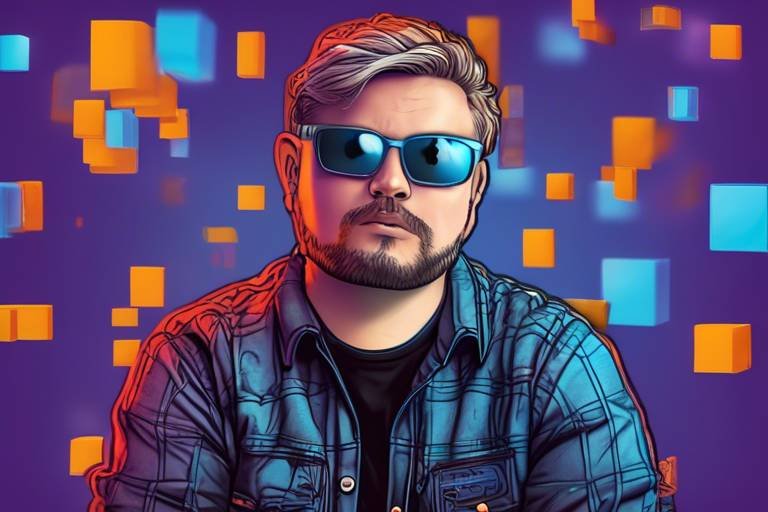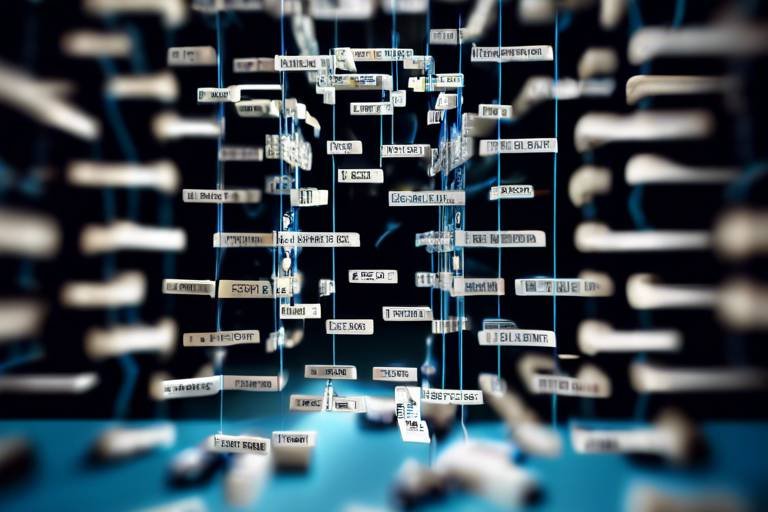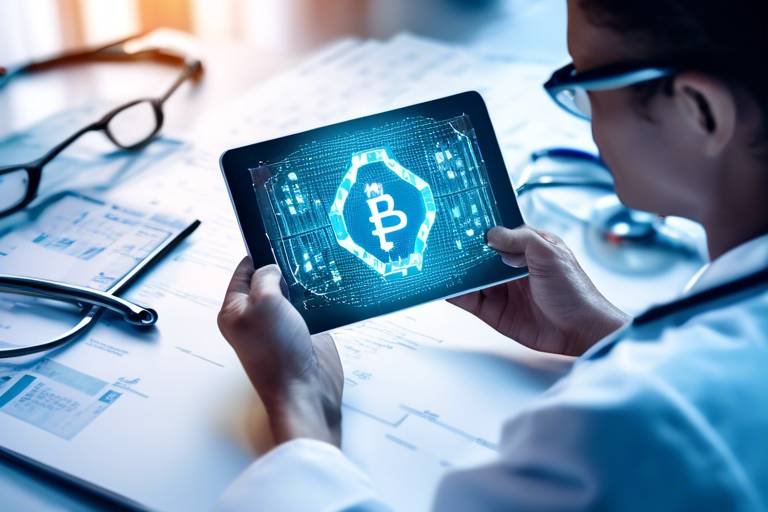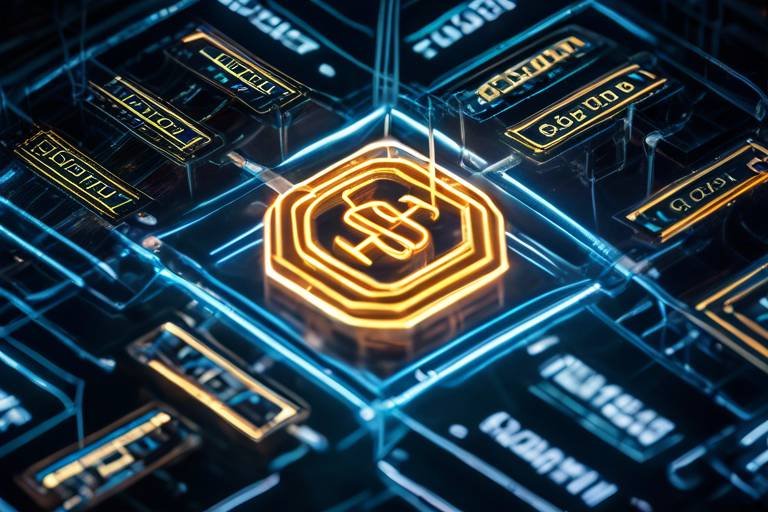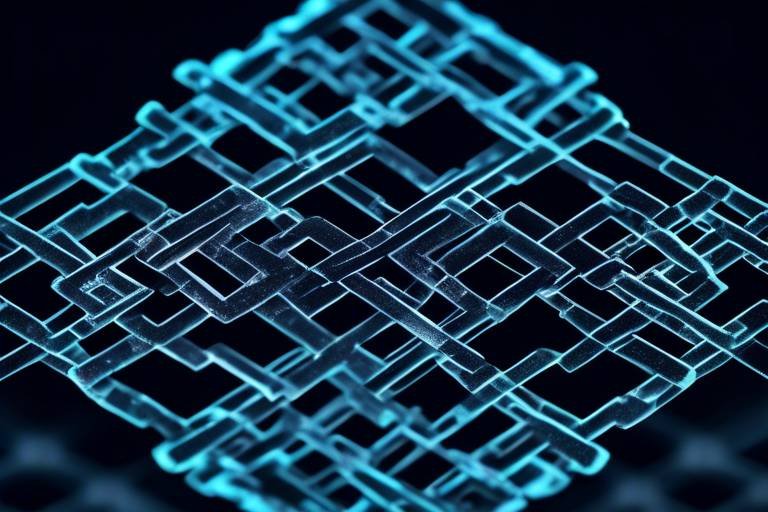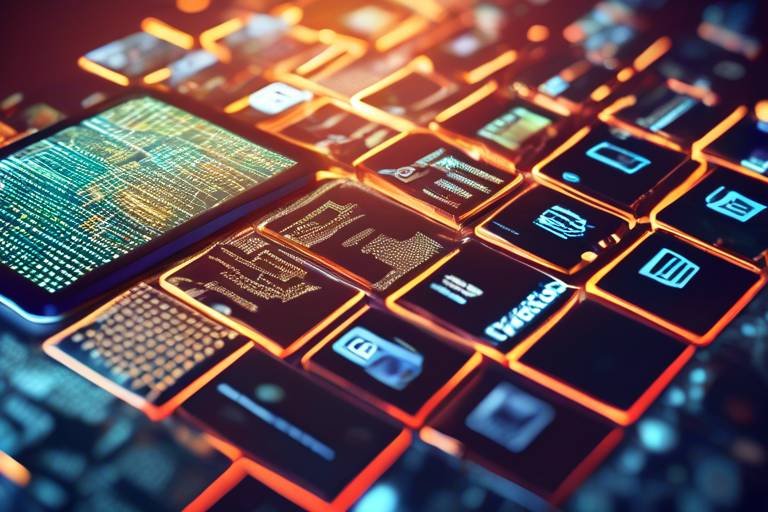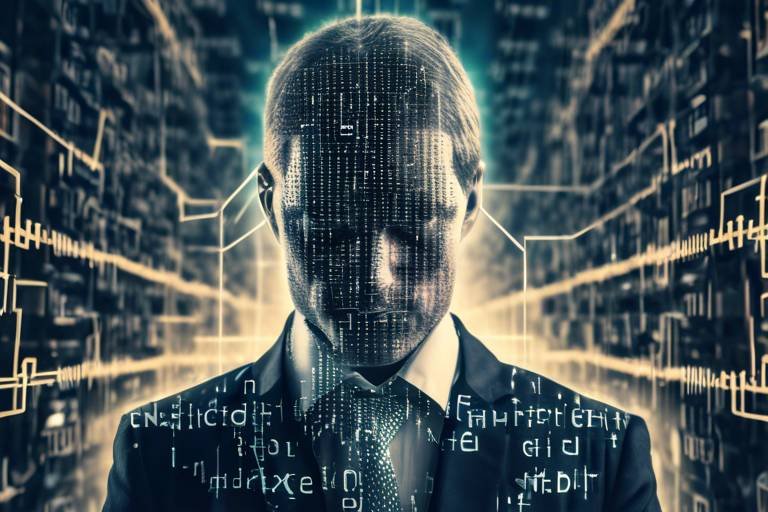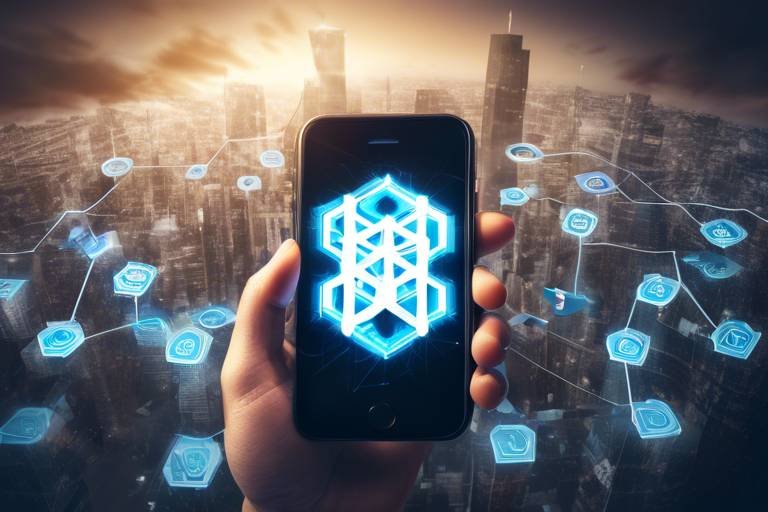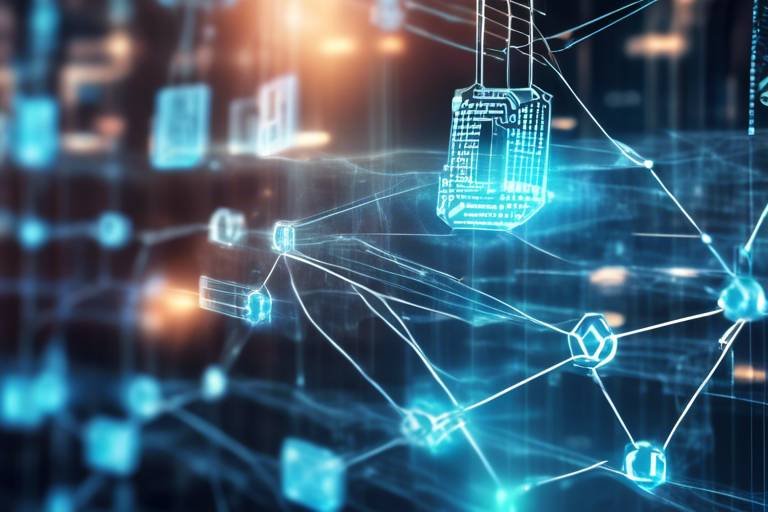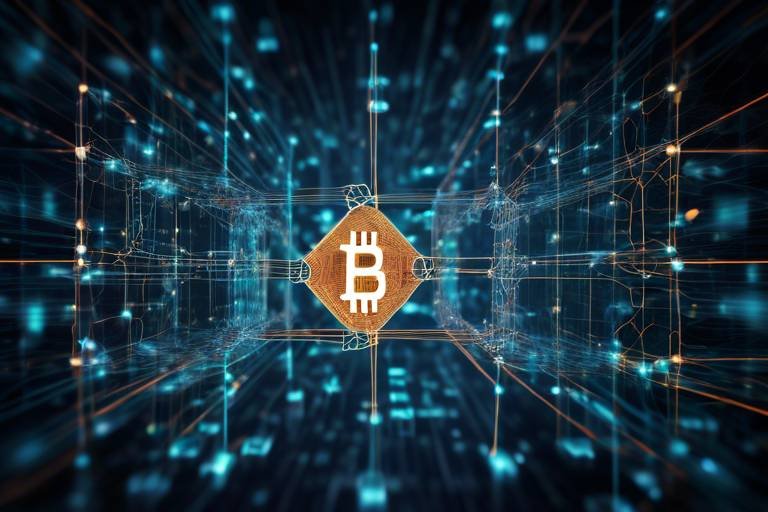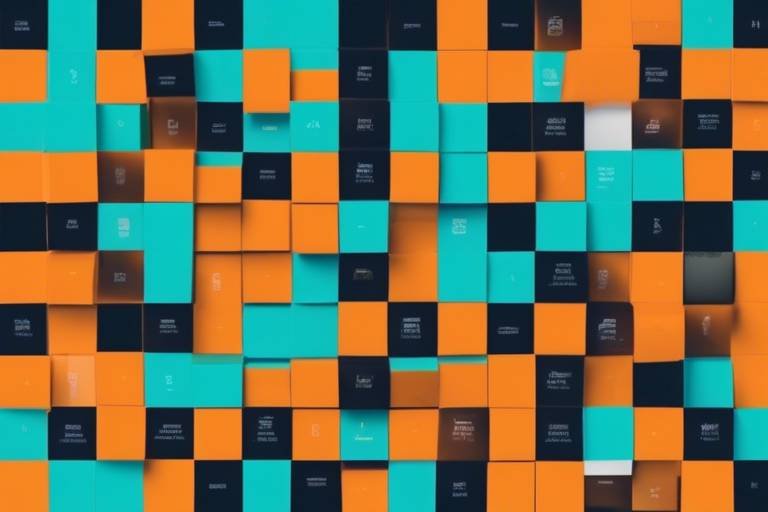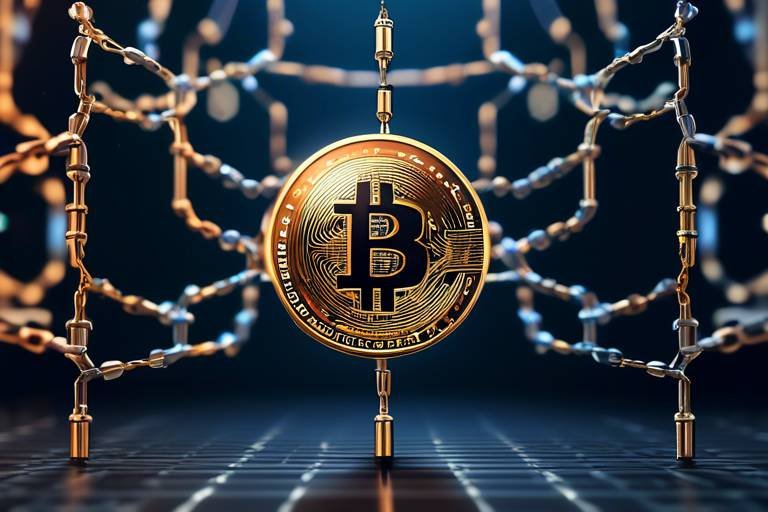How Blockchain is Empowering Creators and Artists
In today's rapidly evolving digital landscape, the intersection of technology and creativity is more dynamic than ever. One of the most groundbreaking innovations that have emerged in recent years is blockchain technology. This technology is not just a buzzword; it is a powerful tool that is reshaping how creators and artists engage with their work, their audience, and their revenue streams. Imagine a world where artists can maintain full control over their creations, earn sustainable income, and build communities around their art—this is the promise of blockchain.
At its core, blockchain provides a decentralized and secure way to record transactions, ensuring that every piece of digital art or creative work can be uniquely identified and authenticated. This is a game changer for artists who have long struggled with issues of copyright infringement and lack of visibility in the traditional art market. With blockchain, artists can not only prove ownership but also establish a transparent history of their work, which is crucial in a world where digital art can be easily copied and shared.
Furthermore, the rise of Non-Fungible Tokens (NFTs) has taken this concept to another level. NFTs are unique digital assets that represent ownership of a specific item or piece of content on the blockchain. This means that an artist can sell their work directly to collectors without relying on galleries or auction houses, which often take a hefty cut of the profits. In this new paradigm, artists can retain a larger share of the revenue from their creations, allowing them to invest more back into their art and their communities.
But the impact of blockchain goes beyond just financial gains. It fosters a sense of community engagement that was previously hard to achieve. Artists can connect directly with their fans, offering exclusive content, behind-the-scenes access, and even participation in collaborative projects. This level of interaction not only strengthens the bond between creators and their audience but also creates a loyal fanbase that is invested in the artist's journey.
In summary, blockchain technology is not merely a tool for financial transactions; it is a revolutionary force that empowers artists and creators in ways we are just beginning to understand. As this technology continues to evolve, we can expect to see even more innovative applications that will further enhance the creative landscape. The future looks bright for artists who are ready to embrace this change and harness the full potential of blockchain.
- What is blockchain technology?
Blockchain is a decentralized digital ledger that records transactions across many computers in a way that the registered transactions cannot be altered retroactively.
- How do NFTs work?
NFTs are unique digital tokens that represent ownership of a specific digital asset, secured by blockchain technology. They can be bought, sold, or traded like physical art.
- What are the benefits of using blockchain for artists?
Artists benefit from increased ownership rights, direct sales to collectors, and a transparent record of their work's provenance, which helps in combating fraud.
- Can blockchain technology change how we view digital art?
Absolutely! By providing proof of ownership and authenticity, blockchain helps elevate digital art to a status comparable to traditional art forms.
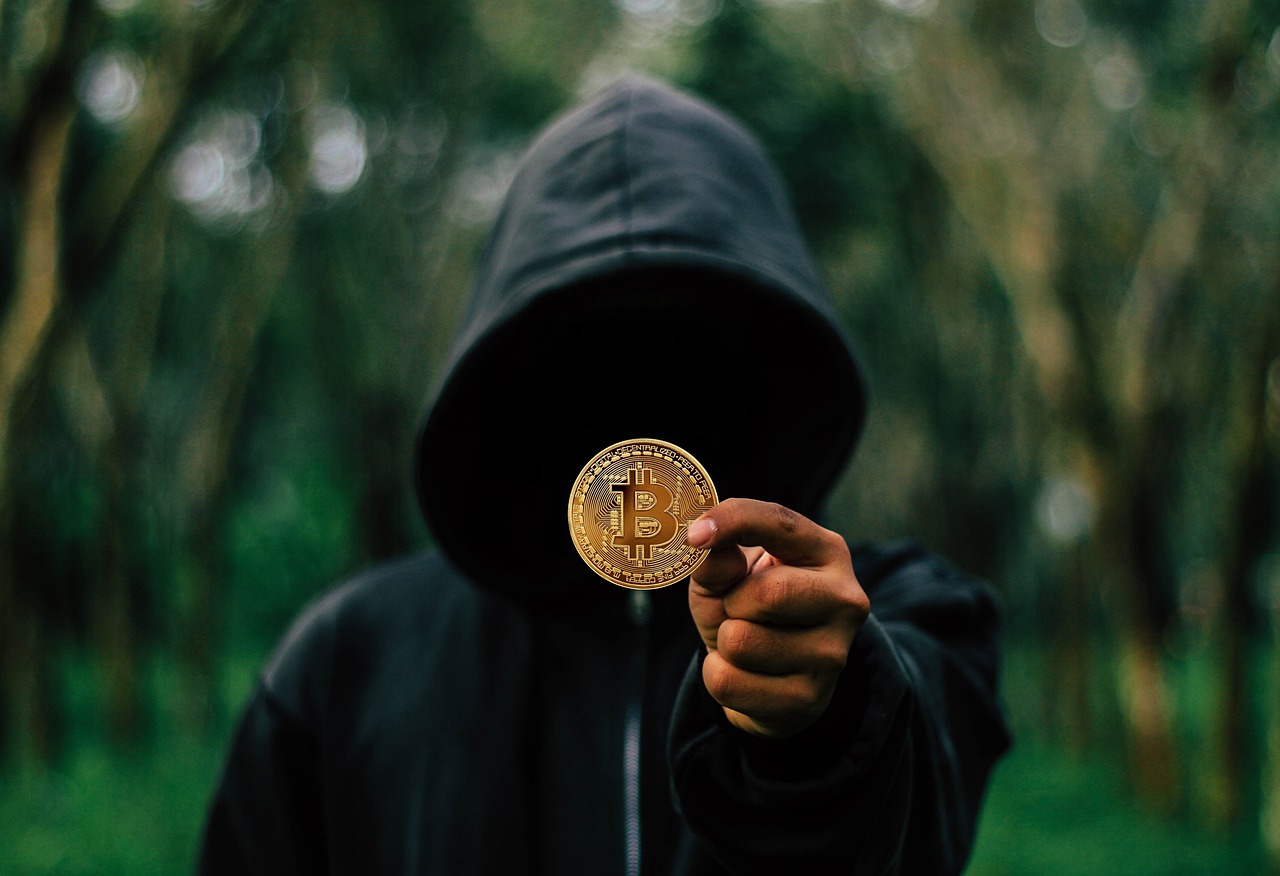
The Rise of NFTs
Non-fungible tokens, or NFTs, have taken the digital art world by storm, transforming the way creators can share, sell, and monetize their work. Imagine a world where every piece of digital art, music, or even a tweet can be owned, traded, and sold just like a physical painting in a gallery. NFTs make this possible by using blockchain technology to provide proof of ownership and authenticity. This revolution is not just about selling art; it's about empowering creators to retain their rights and earn ongoing royalties from their work long after the initial sale.
The concept of NFTs is fascinating because they are unique digital assets that cannot be replicated. This uniqueness is what makes them so appealing to both artists and collectors. When an artist mints an NFT, they create a digital certificate of ownership that is stored on the blockchain. This certificate includes important information such as the creator's identity, the history of ownership, and even the terms of resale. As a result, artists can ensure that their work is properly attributed to them, and collectors can buy with confidence knowing they are purchasing something genuine.
One of the most exciting aspects of NFTs is the potential for royalties. Traditionally, once an artist sells a piece of work, they often lose control over how it is used or resold. With NFTs, however, creators can program royalties into the smart contract associated with the NFT. This means that every time the NFT is sold in the future, a percentage of the sale price goes back to the original artist. This ongoing revenue stream is a game-changer, allowing artists to benefit financially from their work in ways that were previously unimaginable.
Moreover, the rise of NFTs has opened up new avenues for creativity and collaboration. Artists are no longer confined to traditional galleries or auction houses; they can reach a global audience directly through various online platforms. This democratization of art sales allows for a more diverse range of voices and styles to emerge, enriching the creative landscape. For instance, digital artists can now showcase their work on platforms like OpenSea, Rarible, and Foundation, where collectors can browse and purchase NFTs with ease.
As we delve deeper into the world of NFTs, it's essential to recognize the challenges that come with this new technology. Issues such as environmental concerns related to blockchain energy consumption, copyright disputes, and market volatility are all part of the conversation. However, the potential benefits for creators and artists far outweigh these challenges, paving the way for a more equitable and innovative future in the creative industry.
In conclusion, the rise of NFTs is not just a passing trend; it represents a fundamental shift in how we think about ownership, creativity, and compensation in the digital age. By harnessing the power of blockchain technology, artists can reclaim control over their work, engage directly with their audience, and create sustainable revenue streams. This is just the beginning of a new era for creators, one where they can thrive in a landscape that values their contributions like never before.
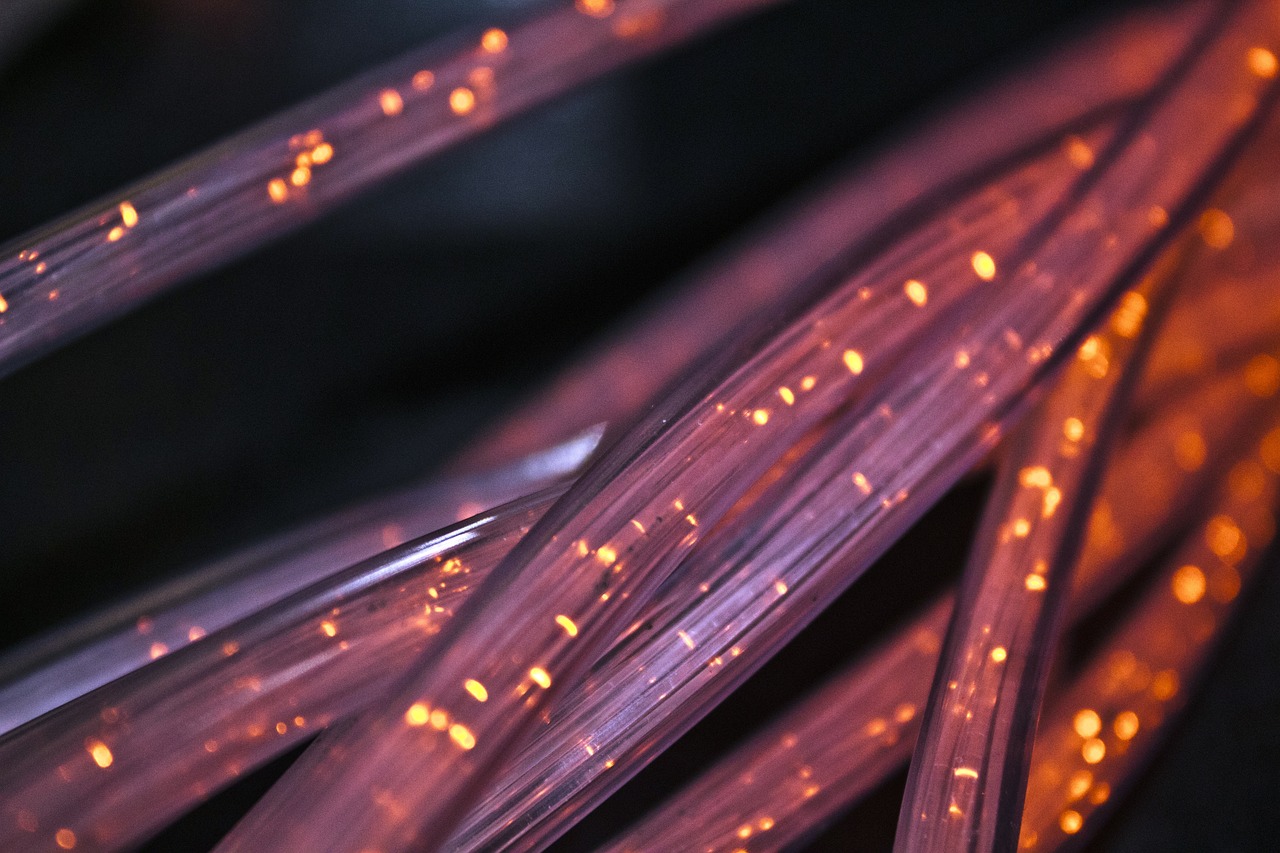
Decentralized Platforms
In the ever-evolving landscape of the creative industry, have emerged as a beacon of hope for artists and creators. Imagine a world where you can connect directly with your audience, bypassing the traditional gatekeepers like galleries and agents. This is not just a dream; it’s the reality that blockchain technology is making possible. By leveraging decentralized platforms, artists can engage with their fans in a way that feels personal and authentic. No longer do creators have to rely on intermediaries who take a hefty cut of their earnings; instead, they can enjoy a more equitable distribution of profits.
At the core of these platforms is the principle of direct transactions. This means that artists can sell their work directly to consumers, keeping a larger share of the profits. For instance, platforms like OpenSea and Rarible allow artists to mint their own NFTs and list them for sale without needing to go through a third party. This not only empowers artists but also fosters a sense of community among creators and collectors. Imagine being able to chat directly with the artist behind a piece you love, discussing their inspiration and creative process. That kind of connection is priceless.
Moreover, decentralized platforms often come with built-in tools that enhance the user experience. These tools can include everything from analytics dashboards that help artists understand their audience better to social features that allow fans to interact with one another. This creates a vibrant ecosystem where artists can thrive and fans can feel like they are part of something bigger. It’s akin to being at a concert where the artist not only performs but also mingles with the audience, creating a shared experience that resonates long after the show is over.
However, it’s essential to note that while decentralized platforms offer numerous advantages, they also come with their own set of challenges. Issues such as scalability, security, and user experience need to be addressed for these platforms to reach their full potential. Additionally, the lack of regulation can sometimes lead to uncertainties, making it crucial for artists and creators to do their due diligence before diving in.
In conclusion, decentralized platforms are reshaping the creative industry by empowering artists to take control of their work and engage with their audience directly. As this technology continues to evolve, we can expect to see even more innovative features that will further enhance the creator experience. The future looks bright for artists who embrace these platforms, and the possibilities are as limitless as their imaginations.
- What are decentralized platforms? Decentralized platforms are online spaces that allow creators to connect directly with their audience, often using blockchain technology to facilitate transactions without intermediaries.
- How do decentralized platforms benefit artists? They allow artists to retain more profit from their sales, engage directly with fans, and reduce reliance on traditional gatekeepers.
- Are there risks associated with using decentralized platforms? Yes, challenges such as scalability, security, and regulatory uncertainties can pose risks for creators.
- Can I sell my art on decentralized platforms? Absolutely! Many platforms enable artists to mint and sell their own NFTs directly to consumers.
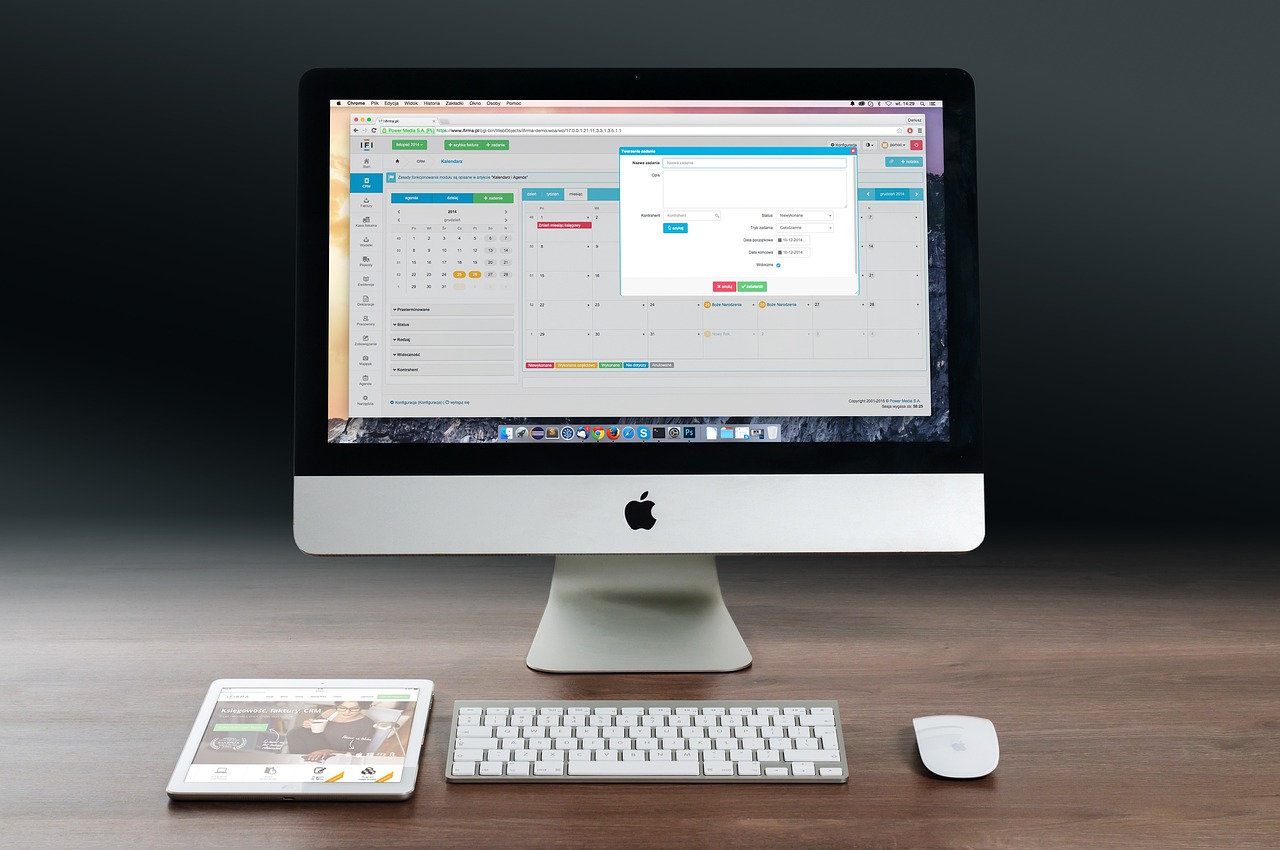
Smart Contracts Explained
When we talk about smart contracts, we’re diving into one of the most exciting aspects of blockchain technology. Think of a smart contract as a self-operating agreement that’s coded into the blockchain. It’s like having a digital vending machine; you put in your money, select your item, and the machine automatically delivers it without any human intervention. In much the same way, smart contracts execute transactions automatically when predetermined conditions are met, eliminating the need for a middleman.
This automation is not just a fancy feature; it fundamentally changes how artists and buyers interact. For instance, an artist can set up a smart contract that stipulates they receive a percentage of any future sales of their artwork. This means that even if the art changes hands multiple times, the original creator continues to benefit financially. It’s a win-win situation that fosters a deeper connection between artists and their collectors.
Here’s how it works in a nutshell:
- Code-Based Agreements: The terms of the agreement are written in code, ensuring clarity and precision.
- Automatic Execution: Once conditions are met, the contract executes automatically, transferring ownership and funds without delay.
- Immutable Records: All transactions are recorded on the blockchain, creating a transparent and unchangeable history.
The beauty of smart contracts lies in their trustless nature. Because they operate on a decentralized network, there’s no need to trust a single entity to fulfill the terms. This drastically reduces the risk of fraud and enhances confidence in the transaction process. Artists can focus on their craft, knowing that their rights are protected and their payments are secure.
Moreover, smart contracts can incorporate various functionalities that further enhance the experience for both creators and collectors. For example, they can include clauses for royalties, ensuring that artists earn a percentage of sales every time their work is resold. This is particularly crucial in the art world, where the value of a piece can increase exponentially over time. By utilizing smart contracts, artists can create a sustainable income stream that continues long after the initial sale.
As we look to the future, the potential applications of smart contracts in the art industry seem limitless. They could pave the way for collaborative projects, where multiple artists come together to create shared works, each benefiting proportionally from sales. Imagine a world where artists can easily collaborate on projects, with smart contracts managing the distribution of profits seamlessly. This could redefine how art is created and consumed, making the process more inclusive and accessible.
In conclusion, smart contracts are more than just a technological innovation; they represent a paradigm shift in how artists and their audiences interact. By removing barriers and enhancing trust, they empower creators to take control of their work and their earnings. As we continue to explore the possibilities of blockchain, it’s clear that smart contracts will play a pivotal role in shaping the future of the creative industry.
What are smart contracts?
Smart contracts are self-executing contracts with the terms directly written into code. They automatically enforce and execute agreements when specified conditions are met.
How do smart contracts benefit artists?
Smart contracts allow artists to retain control over their work, ensuring they receive royalties on future sales and reducing the risk of fraud.
Can smart contracts be changed after they are deployed?
No, smart contracts are immutable once deployed on the blockchain. This ensures that the terms cannot be altered, providing security for all parties involved.
Are smart contracts secure?
Yes, smart contracts are secured by blockchain technology, which is decentralized and cryptographically protected, making them resistant to tampering and fraud.
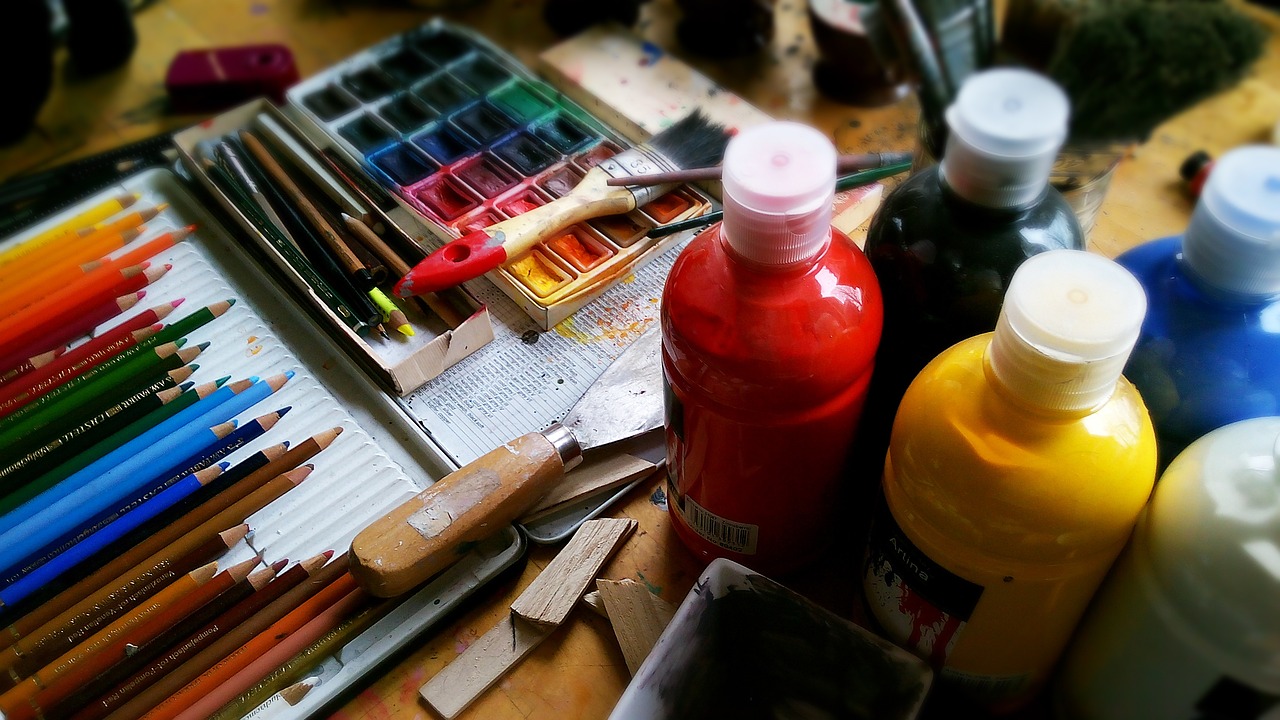
Benefits of Automation
In the ever-evolving world of art and creativity, automation through smart contracts is like having a personal assistant who never sleeps. Imagine a scenario where artists can focus solely on their craft without the constant worry of managing payments or negotiating terms. That’s precisely what automation offers. By utilizing smart contracts, creators can streamline their transactions, ensuring that they receive their fair share without the hassle of traditional methods.
One of the most significant advantages of automation is the reduction of administrative burdens. For many artists, the business side of their work can be overwhelming. From invoicing to tracking payments, these tasks can take precious time away from what truly matters: creating art. With smart contracts, these processes are automated, allowing artists to concentrate on their passion while the technology handles the nitty-gritty.
Additionally, automation enhances transparency in transactions. Artists can set clear terms within the smart contracts, which are then executed automatically when conditions are met. This means no more misunderstandings or disputes over payments. Everything is laid out clearly, and both parties can trust that the agreement will be honored. This level of assurance not only builds trust between creators and buyers but also fosters a more robust marketplace.
Moreover, the ability to automate royalties is a game-changer. Artists can earn a percentage of sales every time their work is resold, thanks to the built-in features of smart contracts. This means that the creative journey doesn’t end with the first sale; it continues to provide financial benefits as the artwork gains value over time. It’s like planting a tree that bears fruit for years to come, ensuring that artists are rewarded for their efforts long after their initial work is sold.
To illustrate the benefits of automation, consider the following table that summarizes key advantages:
| Benefit | Description |
|---|---|
| Time-Saving | Reduces the time spent on administrative tasks, allowing artists to focus on creation. |
| Increased Trust | Ensures transparent agreements that are automatically executed, minimizing disputes. |
| Ongoing Revenue | Automates royalty payments for resales, providing continuous income for artists. |
In conclusion, the benefits of automation through smart contracts are transformative for artists. By simplifying processes, enhancing transparency, and ensuring ongoing revenue, creators can thrive in an environment that supports their artistic endeavors. It’s a win-win situation where technology meets creativity, paving the way for a more sustainable and equitable art industry.
- What are smart contracts? Smart contracts are self-executing contracts with the terms of the agreement directly written into lines of code, enabling automatic execution when conditions are met.
- How do smart contracts benefit artists? They automate payment processes, reduce administrative burdens, and ensure transparency in transactions, allowing artists to focus on their work.
- Can artists earn royalties from resales? Yes, smart contracts can be programmed to automatically pay artists a percentage of sales every time their work is resold.
- What is the role of blockchain in art? Blockchain provides a secure and transparent way to verify ownership and provenance of artwork, combating fraud and establishing trust in the market.
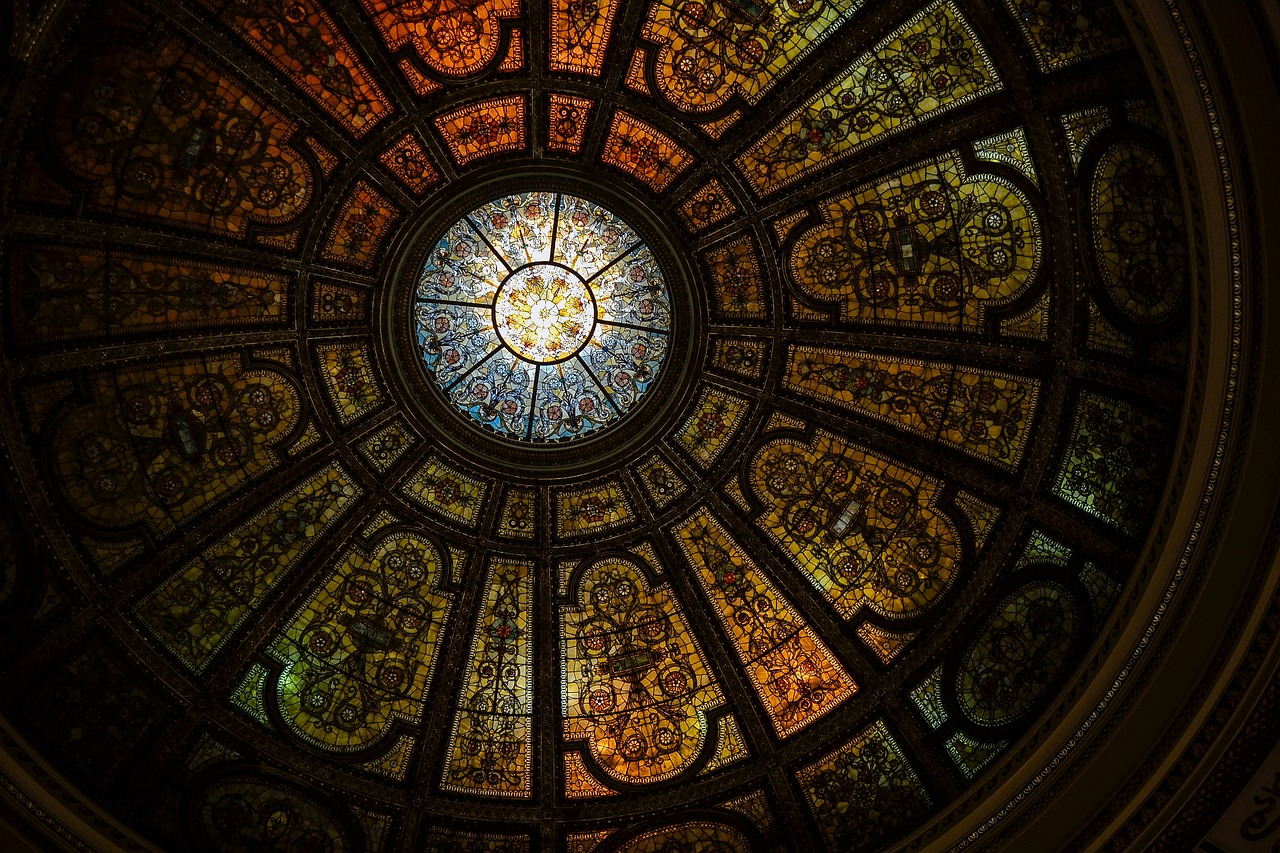
Use Cases in Art Sales
The integration of blockchain technology into the art sales landscape is not just a trend; it's a profound shift that is reshaping how artists and buyers interact. Imagine a world where every piece of art comes with a digital certificate that proves its authenticity and ownership. This is precisely what blockchain offers, and it’s revolutionizing the way art is sold and purchased. For instance, artists can create smart contracts that automatically execute payments when a piece of art is sold, ensuring they receive their fair share without the hassle of chasing payments.
One notable example is the sale of digital art as NFTs (non-fungible tokens). Artists like Beeple have made headlines by selling their digital creations for millions of dollars, all thanks to the transparent and secure nature of blockchain. When a piece is sold, the smart contract can stipulate that the artist receives a percentage of any future sales, allowing them to earn ongoing royalties. This is a game-changer, as traditional art sales often leave artists with little to no compensation after the initial sale.
Furthermore, platforms like OpenSea and Rarible have emerged as decentralized marketplaces where artists can directly list their works for sale. This eliminates the need for galleries or auction houses, which typically take a significant cut of the profits. As a result, artists can set their prices and retain more earnings. The direct connection between creators and collectors fosters a sense of community and trust, as buyers know they are supporting artists directly.
Here are some specific use cases that illustrate how blockchain is making waves in art sales:
- Fractional Ownership: Blockchain allows multiple investors to own a share of an expensive piece of art, making high-value art more accessible.
- Digital Provenance: Artists can provide a verifiable history of their work, ensuring buyers know exactly what they are purchasing.
- Global Reach: Artists can sell to a worldwide audience without geographical limitations, opening up new markets.
As we look toward the future, it’s clear that the use cases for blockchain in art sales will continue to expand. The technology not only enhances the buying and selling process but also empowers artists by giving them more control over their work and its distribution. This shift is not just beneficial for individual creators; it’s transforming the entire art market, making it more equitable and accessible for all involved.
Q: What are NFTs?
A: NFTs, or non-fungible tokens, are unique digital assets verified using blockchain technology, often used to represent ownership of digital art or collectibles.
Q: How do smart contracts work in art sales?
A: Smart contracts are self-executing contracts with the terms of the agreement directly written into code. They automate transactions, ensuring that artists receive payment immediately upon sale without needing a middleman.
Q: Can artists earn royalties from their art after the initial sale?
A: Yes! With blockchain technology, artists can set up smart contracts that allow them to earn royalties from future sales of their work.
Q: How does blockchain ensure the authenticity of art?
A: Blockchain creates an immutable record of ownership and provenance, allowing buyers to verify the authenticity of a piece before purchase.
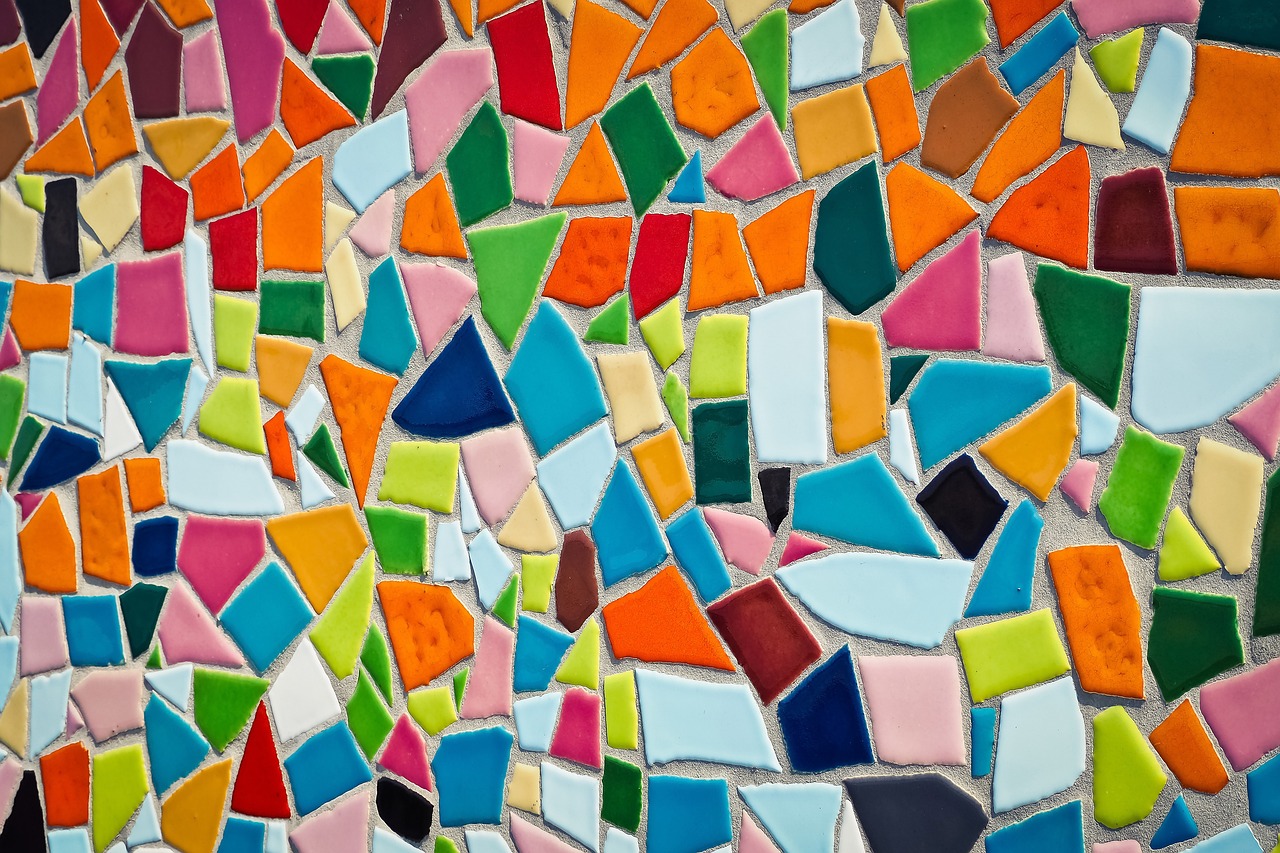
Community Engagement
In the ever-evolving landscape of the creative industry, has emerged as a cornerstone for artists and creators alike. Blockchain technology plays a pivotal role in this transformation, enabling fans and supporters to connect with their favorite creators on a deeper level. Imagine a world where artists can directly engage with their audience without the barriers imposed by traditional intermediaries. This is not just a dream; it’s becoming a reality thanks to the power of decentralized platforms.
One of the most exciting aspects of blockchain is its capacity to facilitate direct contributions from fans. Through mechanisms like crowdfunding and patronage, artists can receive financial support directly from their audience. This not only fosters a sense of community but also allows creators to maintain their artistic integrity without the pressure of commercial demands. Fans can feel like they are part of the creative journey, which enhances their loyalty and investment in the artist's success.
Furthermore, blockchain enables the creation of exclusive content for supporters. Artists can offer unique experiences, such as behind-the-scenes access, limited edition works, or even personalized messages, all secured through smart contracts. This not only enriches the fan experience but also provides artists with a new revenue stream that is both sustainable and rewarding. It’s akin to having a VIP pass to an intimate concert, where the connection between the artist and the audience is palpable and meaningful.
As we delve deeper into the potential of blockchain for community engagement, it becomes clear that the technology encourages a collaborative spirit. Artists can team up with their fans to co-create projects, whether it's a new album, a piece of digital art, or even a community-driven exhibition. This collaborative approach not only enhances the creative process but also strengthens the bond between creators and their supporters, making everyone feel like a vital part of the artistic ecosystem.
To illustrate the impact of community engagement through blockchain, let’s take a look at some key benefits:
| Benefit | Description |
|---|---|
| Direct Support | Fans can contribute financially to projects, ensuring artists receive the necessary funding. |
| Exclusive Content | Creators can offer unique experiences and rewards to their supporters, enhancing loyalty. |
| Collaborative Projects | Blockchain fosters teamwork between artists and fans, leading to innovative creations. |
In conclusion, blockchain technology is not just a tool for transactions; it is a catalyst for that redefines how artists interact with their audiences. By removing barriers and enabling direct connections, it cultivates a vibrant ecosystem where creativity can thrive, and everyone involved feels valued. The future of art is not only about the pieces created but also about the communities built around them.
- What is blockchain technology? Blockchain is a decentralized digital ledger that records transactions across many computers, ensuring security and transparency.
- How do NFTs work? NFTs are unique digital assets verified using blockchain technology, allowing creators to sell their work while retaining ownership and rights.
- Can fans really support artists directly? Yes! Through blockchain platforms, fans can contribute directly to artists' projects, fostering a more engaged and supportive community.
- What are smart contracts? Smart contracts are self-executing contracts with the terms of the agreement directly written into code, automating and securing transactions without intermediaries.
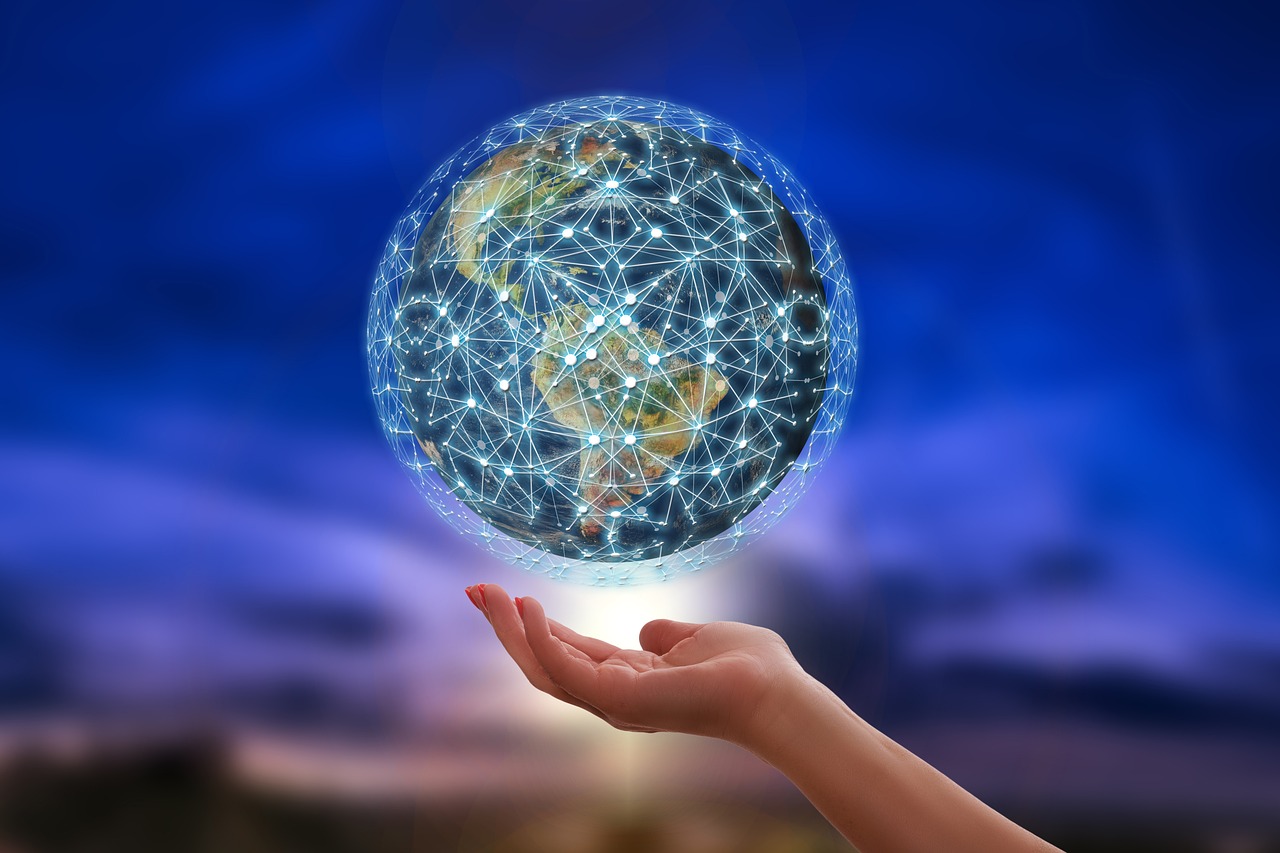
Ownership and Provenance
In the world of art, ownership and provenance are crucial elements that establish the value and authenticity of a piece. With the advent of blockchain technology, artists and collectors alike can now enjoy unprecedented transparency in these areas. Imagine being able to trace the history of an artwork, from its creation to its current owner, all securely recorded on a blockchain. This is not just a dream; it's a reality that blockchain technology has made possible.
One of the most significant advantages of blockchain is its ability to provide a tamper-proof record of ownership. Each transaction involving a piece of art is logged on the blockchain, creating an immutable ledger that anyone can access. This means that buyers can verify the authenticity of a piece before making a purchase, significantly reducing the risk of art fraud. In an industry where forgeries can be rampant, this level of security is invaluable.
Furthermore, the transparent nature of blockchain allows creators to establish their work's provenance easily. For instance, when an artist mints a digital artwork as an NFT, they can include detailed information about the piece, such as its creation date, previous owners, and any exhibitions it has been part of. This not only enhances the artwork's value but also builds a narrative around it that can attract potential buyers.
The impact of blockchain on art collecting cannot be overstated. Collectors now have access to verified information about the pieces they are interested in, allowing them to make informed decisions. This trust in the system encourages more people to invest in art, knowing that they are purchasing unique pieces with a verified history. As the market grows more confident, we can expect to see a surge in both the number of collectors and the value of digital art.
In summary, blockchain technology is revolutionizing the concepts of ownership and provenance in the art world. By providing a secure, transparent, and easily accessible record of ownership, it empowers artists and collectors alike. As we move forward, the integration of blockchain in the creative industry will likely continue to evolve, offering even more innovative solutions to age-old problems.
- What is blockchain technology?
Blockchain is a decentralized digital ledger that records transactions across many computers in a way that the registered transactions cannot be altered retroactively.
- How do NFTs work?
Non-fungible tokens (NFTs) are unique digital assets verified using blockchain technology, representing ownership of a specific item, such as digital art.
- Can blockchain prevent art fraud?
Yes, by providing a transparent and immutable record of ownership and provenance, blockchain significantly reduces the chances of art fraud.
- How does blockchain enhance community engagement for artists?
Blockchain allows fans to support artists directly through contributions, fostering a closer relationship and ensuring that creators receive fair compensation for their work.
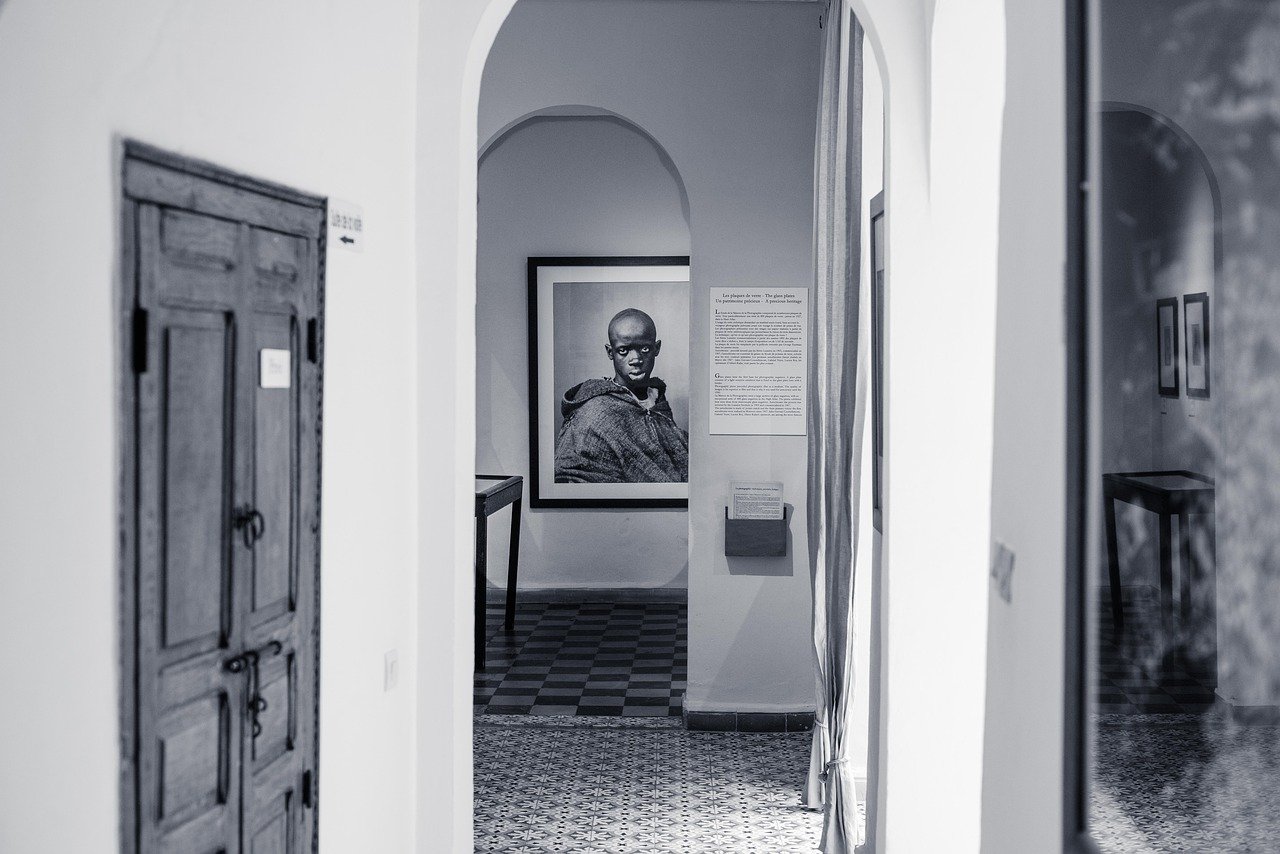
Impact on Art Collecting
The advent of blockchain technology has dramatically transformed the landscape of art collecting, making it more accessible, transparent, and secure than ever before. Imagine a world where every piece of art you purchase comes with a digital certificate that proves its authenticity. This is now a reality, thanks to blockchain's ability to create immutable records of ownership. Collectors can confidently invest in pieces, knowing they are acquiring verified works that have a clear provenance. This transparency not only enhances trust among buyers but also helps in establishing the true value of art.
One of the most significant impacts of blockchain on art collecting is the ability to trace the history of an artwork. Through blockchain, every transaction involving a piece of art is recorded, creating a detailed ledger that showcases its journey from the artist to the collector. This is particularly crucial in today's market, where art fraud can be prevalent. By having access to such detailed provenance, collectors can avoid the pitfalls of counterfeit art and ensure that their investments are legitimate.
The implications of this technology extend beyond just authenticity. With blockchain, collectors can also engage in a more dynamic market. For instance, if a collector decides to sell a piece, they can do so directly on decentralized platforms without the need for traditional auction houses or galleries. This not only saves on hefty commission fees but also allows for a more personal connection between buyers and sellers. Imagine being able to communicate directly with the artist or previous owners of the artwork you are interested in; it adds a layer of storytelling that enriches the collecting experience.
Moreover, blockchain opens new avenues for fractional ownership, allowing multiple collectors to own a share of a high-value piece. This democratizes art collecting, making it possible for individuals who may not have the means to purchase expensive artworks outright to still participate in the market. By pooling resources, collectors can invest in significant pieces together, creating a community of art enthusiasts who share not only the financial burden but also the joy of ownership.
In summary, the impact of blockchain on art collecting is profound. It enhances transparency, reduces fraud, and fosters a more inclusive market. As this technology continues to evolve, we can expect to see even more innovative ways for collectors to engage with art, making the experience not only about ownership but also about connection and community.
- What is blockchain technology? Blockchain is a decentralized digital ledger that records transactions across multiple computers securely and transparently.
- How do NFTs work? NFTs, or non-fungible tokens, are unique digital assets verified using blockchain technology, allowing artists to sell their work while retaining ownership rights.
- Can blockchain prevent art fraud? Yes, blockchain provides a transparent record of ownership and provenance, making it difficult to sell counterfeit art.
- What are decentralized platforms? These are online marketplaces that operate without intermediaries, allowing artists to sell directly to collectors, often at lower fees.
- How does fractional ownership work? Fractional ownership allows multiple people to own shares of a single artwork, making high-value pieces more accessible to a broader audience.
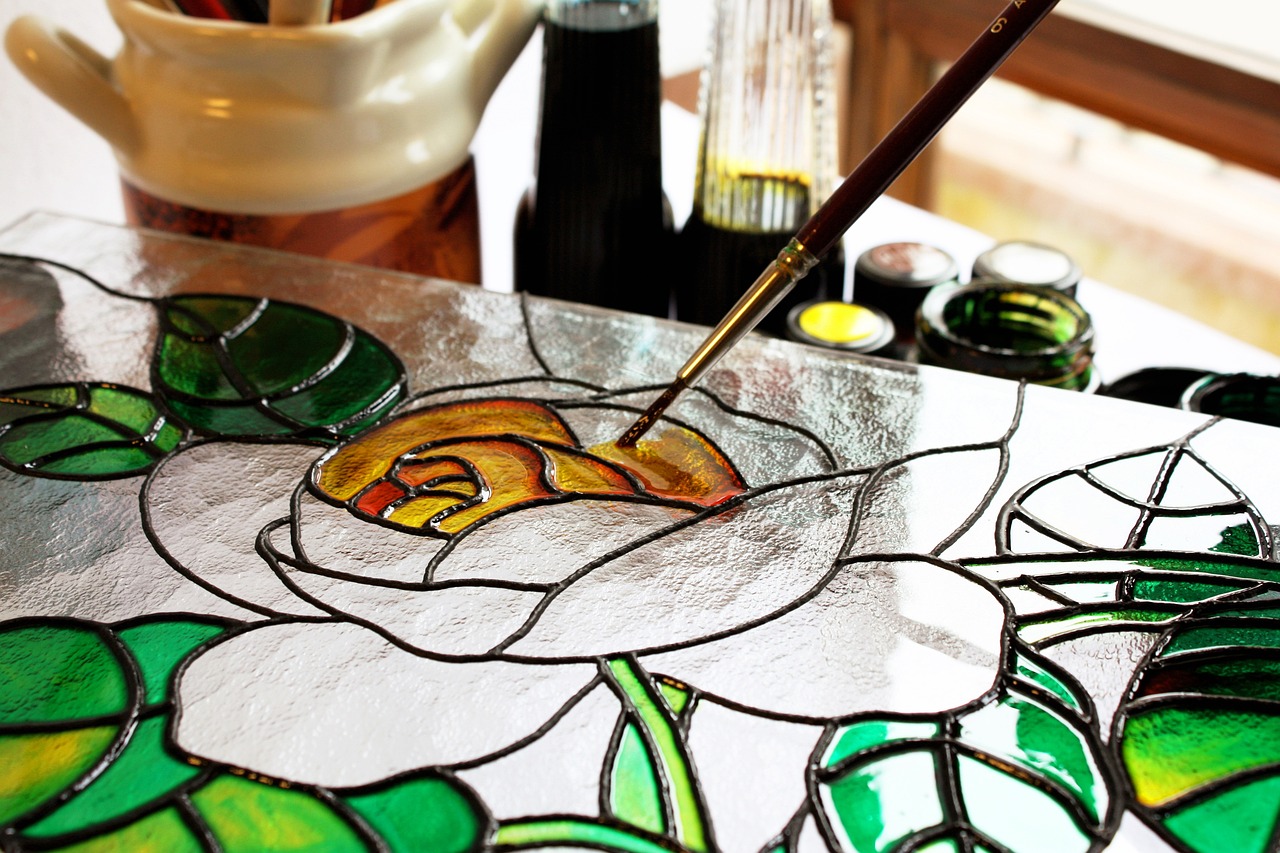
Future Trends in Blockchain Art
The world of blockchain art is rapidly evolving, and as we look to the future, we can anticipate a range of exciting trends that will further empower creators and transform the creative landscape. One of the most promising developments is the rise of innovative funding models. Artists can now leverage crowdfunding platforms built on blockchain technology, allowing them to raise capital directly from their supporters. This not only democratizes the funding process but also strengthens the bond between artists and their audiences, as fans become invested stakeholders in the creator's journey.
Moreover, we can expect to see an increase in collaborative projects that harness the strengths of decentralized networks. Imagine a scenario where multiple artists from different corners of the globe come together to create a unique piece of art, each contributing their own style and vision. Blockchain can facilitate this collaboration by ensuring that all contributors are fairly compensated through smart contracts, thereby encouraging more artists to explore collective creativity.
Another trend that is gaining traction is the integration of augmented reality (AR) and virtual reality (VR) with blockchain technology. As these immersive technologies become more mainstream, artists will have the opportunity to create interactive experiences that blend the digital and physical worlds. For instance, a digital artwork could be displayed in a virtual gallery, where viewers can purchase NFTs that grant them ownership of unique pieces or even access to exclusive content. This fusion of technology will not only enhance the way art is experienced but also open up new revenue streams for creators.
Furthermore, we will likely see the emergence of artistic DAOs (Decentralized Autonomous Organizations). These entities can enable artists to govern their own communities, make collective decisions, and manage funds transparently. By allowing artists to come together under a shared vision, DAOs can empower them to take control of their careers and foster a more equitable art ecosystem. This trend represents a significant shift in how artists can collaborate and support one another, paving the way for a more inclusive and diverse creative community.
As blockchain technology continues to mature, we can also expect advancements in interoperability. This means that digital assets created on one blockchain could be easily transferred and utilized on another. Such interoperability will enhance the liquidity of digital art and create a more interconnected market, allowing artists to reach broader audiences and collectors to explore a wider array of works. With these advancements, the future of blockchain art looks not only promising but also filled with potential for unprecedented growth and innovation.
- What are NFTs, and how do they work?
NFTs, or non-fungible tokens, are unique digital assets verified using blockchain technology. They represent ownership of a specific item, such as digital art, and cannot be exchanged on a one-to-one basis like cryptocurrencies.
- How do smart contracts benefit artists?
Smart contracts automate transactions and agreements between artists and buyers, ensuring that terms are met without intermediaries. This enhances trust and efficiency while reducing administrative burdens for creators.
- Can blockchain help combat art fraud?
Yes, blockchain provides transparent ownership records, allowing artists to prove the authenticity of their work. This is crucial in combating art fraud and establishing trust in the market.
- What role do DAOs play in the future of art?
DAOs enable artists to govern their own communities, make collective decisions, and manage funds transparently. This empowers artists to take control of their careers and fosters a more equitable art ecosystem.
Frequently Asked Questions
- What are NFTs and how do they benefit artists?
NFTs, or non-fungible tokens, are unique digital assets that represent ownership of a specific piece of content, like digital art. They benefit artists by allowing them to retain ownership of their work and earn royalties from future sales, creating a continuous revenue stream beyond the initial transaction.
- How do decentralized platforms empower creators?
Decentralized platforms eliminate the need for intermediaries, enabling artists to connect directly with their audience. This direct interaction fosters a fairer distribution of profits, allowing creators to keep a larger share of their earnings and build a more personal relationship with their supporters.
- What are smart contracts and how do they work in the art industry?
Smart contracts are self-executing contracts with the terms of the agreement directly written into code. In the art industry, they automate transactions between artists and buyers, ensuring that payment is made only when the agreed conditions are met, thus enhancing trust and reducing the need for middlemen.
- How does blockchain enhance community engagement for artists?
Blockchain technology allows fans to support their favorite creators through direct contributions, such as donations or purchases. This direct relationship not only strengthens the bond between artists and their audience but also provides creators with the financial backing they need to continue their work.
- Why is ownership and provenance important in the art world?
Ownership and provenance are crucial because they establish the authenticity of a piece of art. Blockchain provides transparent and immutable records, allowing artists to prove their ownership and the history of their work, which is essential in combating art fraud and building trust in the marketplace.
- What future trends can we expect in blockchain art?
As blockchain technology continues to evolve, we can anticipate innovative funding models, collaborative projects, and new ways for artists to engage with their audience. These trends will further empower creators and expand the possibilities within the art world, making it more accessible and equitable.

